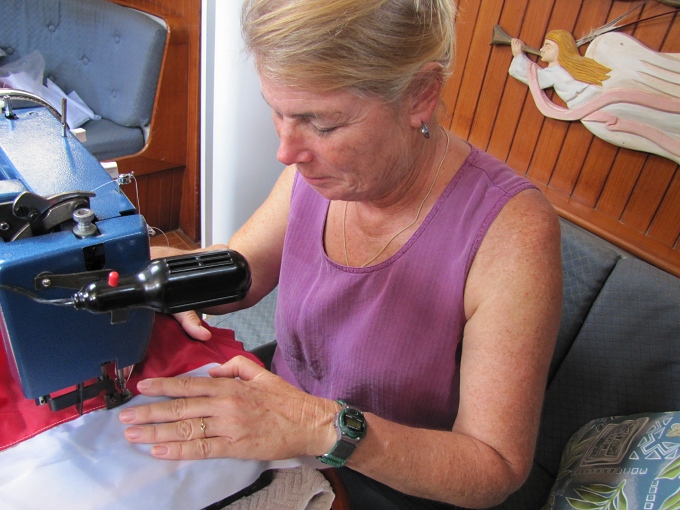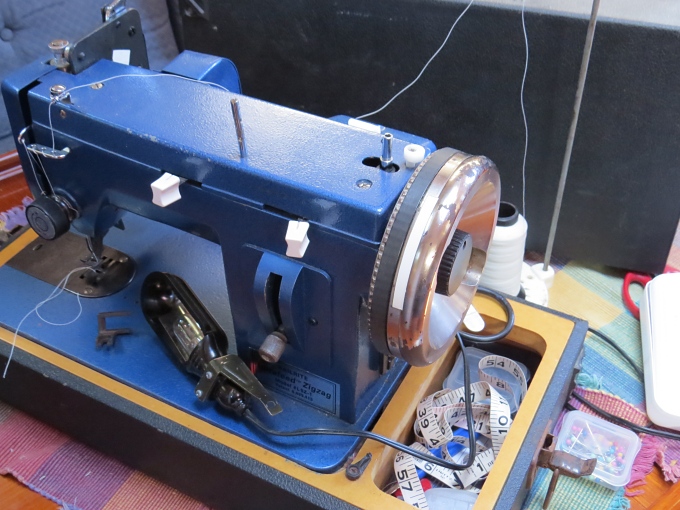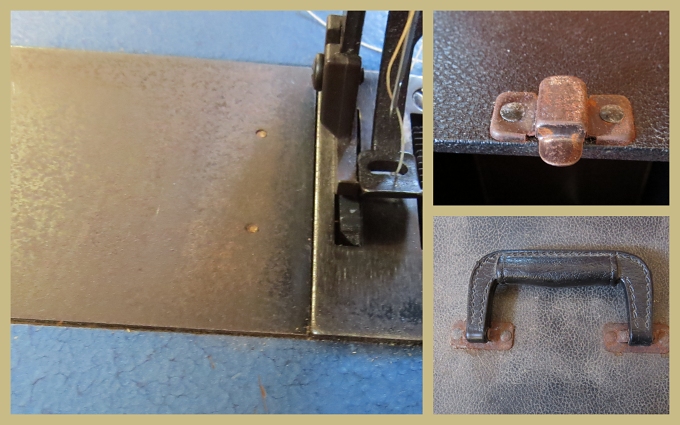Sewing Machine - Tops on Pink Tool List
/I just hauled out my SailRite sewing machine to sew a patch onto the sail cover. I remember when David did his “Top Ten Power Tools Aboard” post, he never mentioned the sewing machine and a reader asked why not. It's probably because he never uses my sewing machine. He's fiddled with it on occasion, but he's never really sewn anything on it. It tends to be a pink tool, I guess, at least aboard Nine of Cups.
I think the reason it never even occurred to either of us to include the sewing machine on David's list is that we don't use it all that often. It's not a tool that you grab and haul out everyday. When we do use it, however, it gets a workout. I've mended sails and UV, made biminis, dodgers, several sail covers, lots of courtesy flags and sewn many other items too numerous to mention.
In general, sewing machines are bulky and not easy to stow and they're heavy. When not in use, the machine nestles under my seldom-used vanity, lashed down and out of the way.
When I need to use it, I usually set it up on the saloon table, although we've certainly hauled it ashore on occasion and even up on deck when necessary.
Heavy duty sewing machines are not cheap. I have an Ultrafeed LSZ-1 which we bought a decade ago. They currently list over $700 for this basic straight/zigzag stitch machine. It handles heavy duty fabric like double and triple thickness sailcloth and Sunbrella. I've purchased several accessories including a monster wheel, a light, a carry case and a zipper foot.
There are a couple of things I don't like about the machine. I find adjusting the tension is a crap shoot. There are no numbers or marks on the tension knob, so you're never quite sure exactly where you are tension-wise which requires some practice runs before you get the stitches right. There are no seam guides, and I've remedied this by etching my own ¼ inch line on the needle plate.
There are some parts of the machine which are especially susceptible to rust like the needle plate and on a boat, that's obviously an issue. The case is heavy duty, but again the hardware rusted which is a problem. The fact that a light was an optional accessory as opposed to being included was rather stingy, I thought, and the method for attaching the light is pretty gimcrack. The zigzag stitch length and the arm limit the sail size and area you can work with, but quite honestly if my machine can't handle it, I probably don't want to wrestle it into the saloon and deal with it anyway. Perhaps some of these shortcomings have been addressed in the newer models. All that said, I love the machine.
SailRite has a great catalog (hard copy and on-line) for just about any do-it-yourself sewing needs you might have for pretty much any sewing project. Their customer service is great.
No, we don't get any kick-back from SailRite, but I might call Big Matt and see if he wants to advertise on the blogsite. Hey, if you buy anything from them, tell 'em Nine of Cups sent you. Now excuse me while I patch the sail cover.
Hint: Mark your sewing machine case with a piece of tape noting the “needle end”. It makes it much easier to place the heavy machine on your work surface in the correct sewing position the first time.











